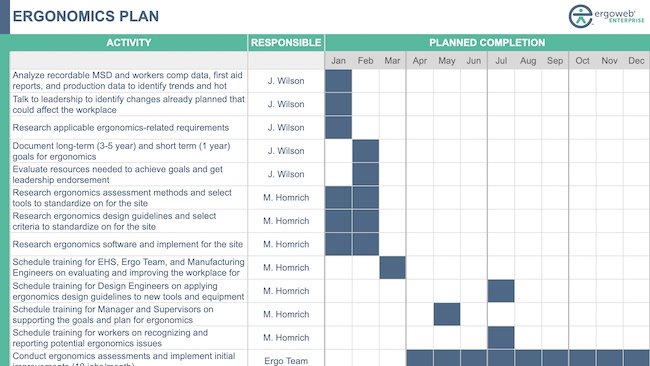Ergoweb® Learning Center
We’ve published and shared thousands of ergonomics articles and resources since 1993. Search by keyword or browse for topics of interest.
Downloadable Guides
Browse Open Access Articles
December 20, 2013
Before: Difficult despite two people After: Easier with just one person Background Vacuum technology has developed dramatically in recent years, providing a good option for many […]
December 20, 2013
Background Bins are similar to racks, but hold smaller items, often picked individually and not by the carton. Usually the items in bins are not as heavy […]
December 20, 2013
December 19, 2013
Your “How-To” Guides & Best Practices Knowledgebase Thousands of examples and descriptive overviews for improving production operations. Browse the categories, read the “how to” guides, and […]
December 19, 2013
Fixtures: bench top backstop pins cradle quick release powered clamps tiltable fixture ball joints rotating Fixtures: free-standing shop stands positioner stands pedestals trunnions work positioner […]
December 18, 2013
Pallet and container lifts fixed height spring-loaded floor flush overhead portable turntable manual pump Conveyors standard belt and roller flexible multidirectional inclined overhead auger/screw air […]
December 11, 2013
This is important research for anyone who performs observational postural assessments. Researchers Bao, Howard, Spielholz, Silverstein, and Polissar conducted a study designed to investigate interrater reliability -- the ability of different observers/assessors to reach the same conclusions when visually estimating posture. Their results indicate that the nature of the assessment tool, large angle categories vs. small angle categories in particular, and the experience and training of the assessor can have significant impacts on reliability.
November 19, 2013
As winter descends upon the northern hemisphere, it reminds us of the effects of temperature on human performance. We all know temperature can impair human abilities, […]
November 5, 2013
A team of researchers studied various center-to-center key spacing on computer keyboards to investigate whether current keyboard design standards are conducive to typing performance (speed, error rates), usability, and forearm biomechanics. Current keyboard design standards, oddly, are not based on human performance data, and this study is one of the few that takes a human-centered ergonomics approach to the ubiquitous computer keyboard. Their findings will impact future keyboard design standards, and bring credibility to the phrase "I fat-fingered it," a common explanation for keyboard related errors. Could this study also begin to lay a foundation for different sized keyboards for different sized people?






